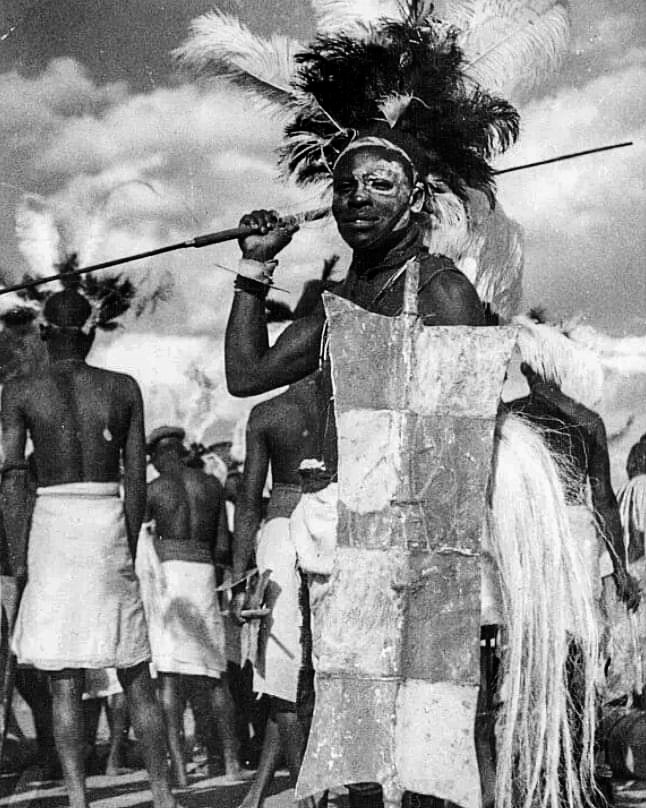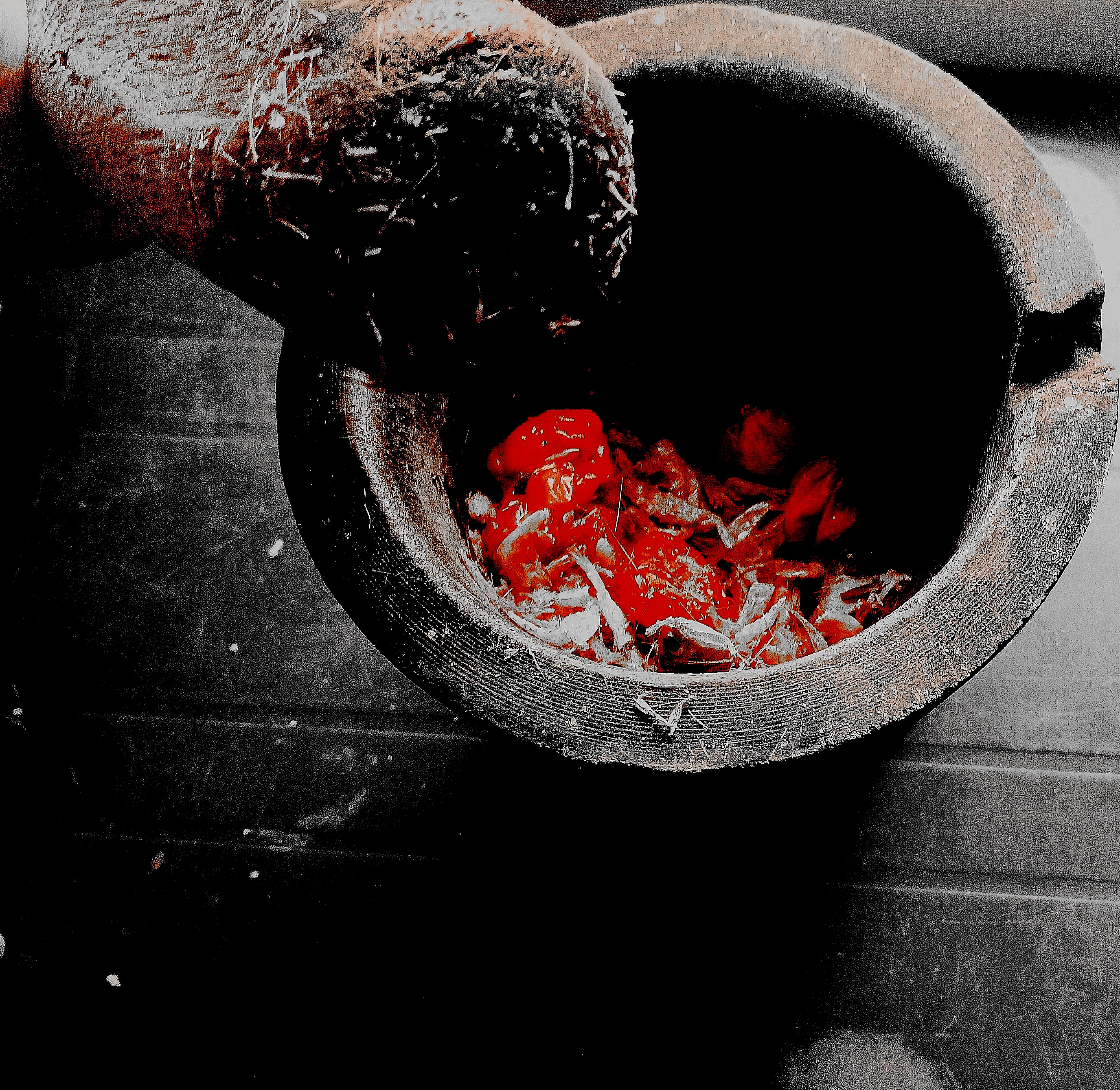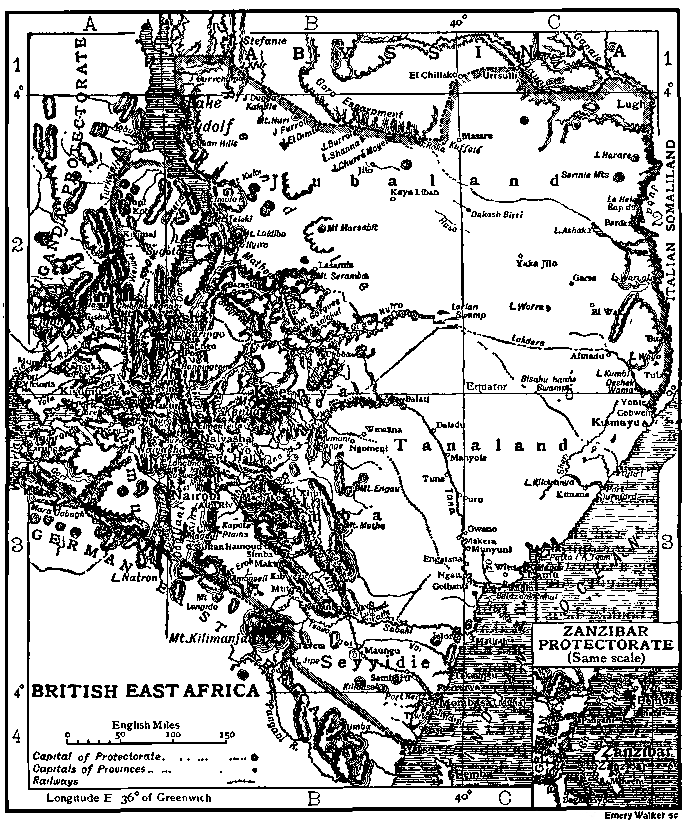|
Prophetess Syokimau
Syokimau was a Kamba medicine woman and prophetess who lived in the 1800s long before Kenya became a colony. She was born and lived in Iveti Hills near the today's Machakos town. It is claimed that Syokimau could predict impeding attacks from other communities such as the Maasai and Gikuyu giving Kamba warriors ample time to prepare for the defense. Overview Syokimau is credited as the greatest prophetess among the Kamba people because she foretold the coming of the white men and the construction of the railway line. In her vision, she saw a long snake belching fire and smoke as to moved from waters to another waters. In it there were people with skin like meat who spoke unintelligibly like birds and carried fire in their pockets. Her prophecy came to pass in the 20th century after the completion of the Kenya-Uganda Railway that ran from Mombasa to Kisumu, the lakeside city then known as Port Florence. The people she saw were white people who spoke English and carried matchboxes in ... [...More Info...] [...Related Items...] OR: [Wikipedia] [Google] [Baidu] |
Kamba People
The Kamba or Akamba (sometimes called Wakamba) people are a Bantu ethnic group who predominantly live in the area of Kenya stretching from Nairobi to Tsavo and north to Embu, in the southern part of the former Eastern Province. This land is called ''Ukambani'' and constitutes Makueni County, Kitui County and Machakos County. They also form the second largest ethnic group in 8 counties including Nairobi and Mombasa counties. Origin The Kamba are of Bantu origin.Joseph Bindloss, Tom Parkinson, Matt Fletcher, ''Lonely Planet Kenya'', (Lonely Planet: 2003), p.35. They are closely related in language and culture to the Kikuyu, the Embu, the Mbeere and the Meru, and to some extent relate closely to the Digo and the Giriama of the Kenyan coast. Kambas are concentrated in the lowlands of southeast Kenya from the vicinity of Mount Kenya to the coast. The first group of Kamba people settled in the present-day Mbooni Hills in the Machakos District of Kenya in the second half of ... [...More Info...] [...Related Items...] OR: [Wikipedia] [Google] [Baidu] |
Syokimau Railway Station
Syokimau is a residential area in the west of Machakos County, Kenya, just south of Nairobi and Jomo Kenyatta International Airport. The place is named after the legendary Akamba medicine woman Prophetess Syokimau. Syokimau Prophesied the coming of the white people to Kenya and also prophesied the construction of the Mombasa to Kisumu railway line. In her prophecy she said she could see people of a different colour emanating from kisuani, the modern day port of Mombasa and carrying fire in their pockets which was later to be understood as white people in vessels carrying matchboxes and guns. She prophesied seeing a long snake, whose head was in the Indian Ocean and the tail was in Lake Victoria. Administratively, most of Syokimau falls within Syokimau/Mlolongo ward in Mavoko Constituency of Machakos County. Transport In November 2012, the Kenyan government officially opened a new metro rail service station in Syokimau, with a service leading to the Nairobi railway station and ... [...More Info...] [...Related Items...] OR: [Wikipedia] [Google] [Baidu] |
Traditional African Medicine
Traditional African medicine is a range of traditional medicine disciplines involving Indigenous peoples of Africa, indigenous herbalism and Traditional African religions, African spirituality, typically including divination, diviners, midwives, and herbalism, herbalists. Practitioners of traditional African medicine claim to be able to cure a variety of diverse conditions including cancer, psychiatric disorders, high blood pressure, cholera, most venereal diseases, epilepsy, asthma, eczema, fever, anxiety, depression, benign prostatic hyperplasia, urinary tract infections, gout, and healing of wounds and burns and even Ebola. Diagnosis is reached through spiritual means and a treatment is prescribed, usually consisting of a herbal remedy that is considered to have not only healing abilities but also symbolic and spiritual significance. Traditional African medicine, with its belief that illness is not derived from chance occurrences, but through spiritual or social imbalance, dif ... [...More Info...] [...Related Items...] OR: [Wikipedia] [Google] [Baidu] |
Kenyan Religious Leaders
) , national_anthem = "Ee Mungu Nguvu Yetu"() , image_map = , map_caption = , image_map2 = , capital = Nairobi , coordinates = , largest_city = Nairobi , official_languages = Constitution (2009) Art. 7 ational, official and other languages"(1) The national language of the Republic is Swahili. (2) The official languages of the Republic are Swahili and English. (3) The State shall–-–- (a) promote and protect the diversity of language of the people of Kenya; and (b) promote the development and use of indigenous languages, Kenyan Sign language, Braille and other communication formats and technologies accessible to persons with disabilities." , languages_type = National language , languages = Swahili , ethnic_groups = , ethnic_groups_year = 2019 census , religion = , religion_year = 2019 census , demonym = ... [...More Info...] [...Related Items...] OR: [Wikipedia] [Google] [Baidu] |
History Of Kenya
A part of Eastern Africa, the territory of what is known as Kenya has seen human habitation since the beginning of the Lower Paleolithic. The Bantu expansion from a West African centre of dispersal reached the area by the 1st millennium AD. With the borders of the modern state at the crossroads of the Bantu, Nilo-Saharan and Afro-Asiatic ethno-linguistic areas of Africa, Kenya is a truly multi-ethnic state. The European and Arab presence in Mombasa dates to the Early Modern period, but European exploration of the interior began in the 19th century. The British Empire established the East Africa Protectorate in 1895, from 1920 known as the Kenya Colony. The independent Republic of Kenya was formed in 1963. It was ruled as a de facto one-party state by the Kenya African National Union (KANU), led by Jomo Kenyatta from 1963 to 1978. Kenyatta was succeeded by Daniel arap Moi, who ruled until 2002. Moi attempted to transform the ''de facto'' one-party status of Kenya into a ''de ju ... [...More Info...] [...Related Items...] OR: [Wikipedia] [Google] [Baidu] |
Kenyan Culture
The culture of Kenya consists of multiple traditions and trends. Kenya has no single prominent culture that identifies it. Its cultural heritage and modern expressions of culture instead consist of various cultures, shaped and practiced by the country's different communities. However, a different scholarly opinion from Prof. Olubayi Olubayi of Kenya states that "a distinct national culture of Kenya has emerged and continues to grow stronger as it simultaneously borrows from, reorganizes, and lends to, the 50 ancient ethnic cultures of Kenya. The emerging national culture of Kenya has several strong dimensions that include the rise of a national language, the full acceptance of Kenyan as an identity, the success of a postcolonial constitutional order, the ascendancy of ecumenical religions, the urban dominance of multiethnic cultural productions, and increased national cohesion" Specifics The largest subsaharan ethnic groups are the Bantu, especially the Kikuyu, and the Nil ... [...More Info...] [...Related Items...] OR: [Wikipedia] [Google] [Baidu] |
Prophets
In religion, a prophet or prophetess is an individual who is regarded as being in contact with a divine being and is said to speak on behalf of that being, serving as an intermediary with humanity by delivering messages or teachings from the supernatural source to other people. The message that the prophet conveys is called a prophecy. Claims of prophethood have existed in many cultures and religions throughout history, including Judaism, Christianity, Islam, ancient Greek religion, Zoroastrianism, Manichaeism, Hinduism , and many others. Etymology The English word ''prophet'' is the transliteration of a compound Greek word derived from ''pro'' (before/toward) and ''phesein'' (to tell); thus, a προφήτης (''prophḗtēs'') is someone who conveys messages from the divine to humans, including occasionally foretelling future events. In a different interpretation, it means advocate or speaker. In Hebrew, the word נָבִיא (''nāvî''), "spokesperson", traditionally tra ... [...More Info...] [...Related Items...] OR: [Wikipedia] [Google] [Baidu] |
Athi River
Athi River is a town outside Nairobi, Kenya in Machakos County. The town is named after the Athi River, which passes through. It is also known as Mavoko. Athi River hosts the Mavoko Municipal Council and is the headquarters of Mavoko division, which is part of Machakos County. The town's population is 81,302 (2019 census), and it is still growing due to its proximity to the Kenyan capital city of Nairobi. Metropolitan area Athi River is part of the Greater Nairobi Metropolitan area. History Athiriver also known as Mavoko was carved off the ''Nairobi County Council'' in 1963, when the latter was disbanded. Mavoko municipality has six wards (Athi River West, Katani, Kinanie/Mathani, Makadara, Muthwani and Sophia). All these wards belong to Mavoko constituency, which has a total of ten wards. The remaining four wards are within Masaku County Council.Electoral Commission of Kenya''Registration centres by electoral area and constituency'' Industry The town is relatively indu ... [...More Info...] [...Related Items...] OR: [Wikipedia] [Google] [Baidu] |
Nairobi Terminus
Nairobi Terminus is a railway station on the Mombasa–Nairobi Standard Gauge Railway (SGR) located in Syokimau, just south of Nairobi, the capital of Kenya. Two passenger trains leave the station everyday, an inter-county train that stops at all stations and an express train that goes directly to Mombasa Terminus Mombasa Terminus is a terminus of the Mombasa–Nairobi Standard Gauge Railway in Kenya located in Miritini, a suburb of Mombasa. The station building is made up of concentric circles and a central tower, representing a ripple in the ocean. Tw .... The Nairobi Terminus station was built next to the existing Syokimau station, which allows passengers to transfer from standard gauge trains to metre gauge trains to get to the Nairobi city centre. Gallery Nairobi Terminus transfer from SGR to Meter Gauge.jpg, Nairobi Terminus transfer from SGR to meter gauge train network Nairobi Terminus - platform.jpg, A train at the platform on Nairobi Terminus just before departur ... [...More Info...] [...Related Items...] OR: [Wikipedia] [Google] [Baidu] |
Jomo Kenyatta International Airport
Jomo Kenyatta International Airport , is an international airport in Nairobi, the capital of and largest city in Kenya. The other three important international airports in Kenya include the Kisumu International Airport, Moi International Airport and Eldoret International Airport. JKIA is located in the Embakasi suburb southeast of Nairobi's central business district, the airport has scheduled flights to destinations in over 50 countries. Originally named Embakasi Airport, the airport's name was changed in 1978 to honor Jomo Kenyatta, Kenya's first president and prime minister. The airport served over 7 million passengers in 2016, making it the seventh busiest airport in passenger traffic on the continent. History 1950s and 1960s Discussions about building the airport date back to 1945. At that time, the colonial power—Britain—and its national airline, BOAC, were worried that the existing airport at Eastleigh was inadequate for post-War civilian airliners. The costs of ... [...More Info...] [...Related Items...] OR: [Wikipedia] [Google] [Baidu] |



.jpg)
